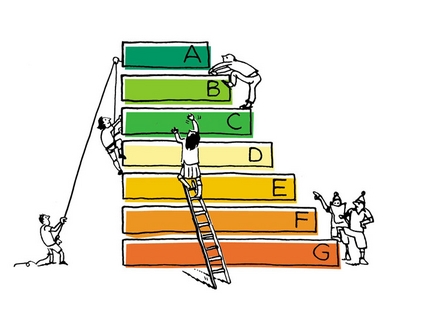Is Playboy Magazine Responsible for Divorce?

Sign up for the Smarter Faster newsletter
A weekly newsletter featuring the biggest ideas from the smartest people
Here is a post for commenters who like to write, “Repeat after me people, correlation does not imply causality!” whenever they read an empirical result they do not want to believe is true.
A working paper out of the University of Michigan finds that between 10 and 25% of divorces in the period from 1962 to 1979 were caused by Playboy magazine. These estimates imply that Playboy magazine is responsible for between 1.4 and 3.5 million of the 14 million divorces in the years 1962 and 1979. All this despite the fact that on average, at this time, less than 2% of the population bought Playboy.
Given that teenaged boys and single men would have been the purchasers of many of these magazines, Playboy must have been one seriously naughty magazine to have such a big effect on marriage.
And to think of the nerve of Playboy founder Hugh Hefner who said in a New York Times Magazine interview last year that he was proud to have paved the way for middle-class couples to live together without being married when clearly his magazine has been tearing families apart for decades.
What is even more surprising is that this data is from a period in which at-fault divorce was still the law in the US. That meant that in order for a woman to divorce her husband she needed to prove that he was unfaithful, abusive, had abandoned her or had committed a felony. In order to convincingly argue that Playboy readership had such a significant effect on the divorce rate at this time, the authors need to demonstrate a correlation between reading Playboy magazine and any one of those offenses.
This paper is a nice contrast to the paper we talked about last weekend that argued there is no relationship between having access to the Internet at home and a couple’s probability of divorcing. If you remember, that paper found a negative relationship between divorce and Internet access (married couples with access to the Internet at home were less likely to get divorced). That relationship disappeared completely, though, when the author added control variables like income, education, number of children in the family, race, living in the city – all the other things that we know explain why couples divorce.
Repeat after me people, if you don’t have control variables the results tell us nothing!
The interesting question is that if pornography, in the form of Playboy magazine, had such a huge effect on divorce rates in the 1960s and 1970s, then why has access to online pornography in more recent times had no effect? Porn is now much cheaper and easier to obtain. Sure it is easier to hide too, but I don’t think that 3.5 million women divorce their husbands because they found a Playboy under the mattress.
There is an opportunity for a second look at the relationship between porn and divorce. Sales of the French rugby team calendar have been fierce here in France, where I currently live, over the past couple of months and those pictures would make a 1960s playmate blush they are so erotic.
Women don’t normally show up in the thousands to buy pictures of naked men, so will France experience a jump in its divorce rate in 2012? If they do I suspect we will see it in February…or maybe May. April might also be a bad month for marriage. More research is clearly needed to be certain.
Given that teenaged boys and single men would have been the purchasers of many of these magazines, Playboy must have been one seriously naughty magazine to have such a big effect on marriage.
And to think of the nerve of Playboy founder Hugh Hefner who said in a New York Times Magazine interview last year that he was proud to have paved the way for middle-class couples to live together without being married when clearly his magazine has been tearing families apart for decades.
What is even more surprising is that this data is from a period in which at-fault divorce was still the law in the US. That meant that in order for a woman to divorce her husband she needed to prove that he was unfaithful, abusive, had abandoned her or had committed a felony. In order to convincingly argue that Playboy readership had such a significant effect on the divorce rate at this time, the authors need to demonstrate a correlation between reading Playboy magazine and any one of those offenses.
This paper is a nice contrast to the paper we talked about last weekend that argued there is no relationship between having access to the Internet at home and a couple’s probability of divorcing. If you remember, that paper found a negative relationship between divorce and Internet access (married couples with access to the Internet at home were less likely to get divorced). That relationship disappeared completely, though, when the author added control variables like income, education, number of children in the family, race, living in the city – all the other things that we know explain why couples divorce.
Repeat after me people, if you don’t have control variables the results tell us nothing!
The interesting question is that if pornography, in the form of Playboy magazine, had such a huge effect on divorce rates in the 1960s and 1970s, then why has access to online pornography in more recent times had no effect? Porn is now much cheaper and easier to obtain. Sure it is easier to hide too, but I don’t think that 3.5 million women divorce their husbands because they found a Playboy under the mattress.
There is an opportunity for a second look at the relationship between porn and divorce. Sales of the French rugby team calendar have been fierce here in France, where I currently live, over the past couple of months and those pictures would make a 1960s playmate blush they are so erotic.
Women don’t normally show up in the thousands to buy pictures of naked men, so will France experience a jump in its divorce rate in 2012? If they do I suspect we will see it in February…or maybe May. April might also be a bad month for marriage. More research is clearly needed to be certain.
Sign up for the Smarter Faster newsletter
A weekly newsletter featuring the biggest ideas from the smartest people





